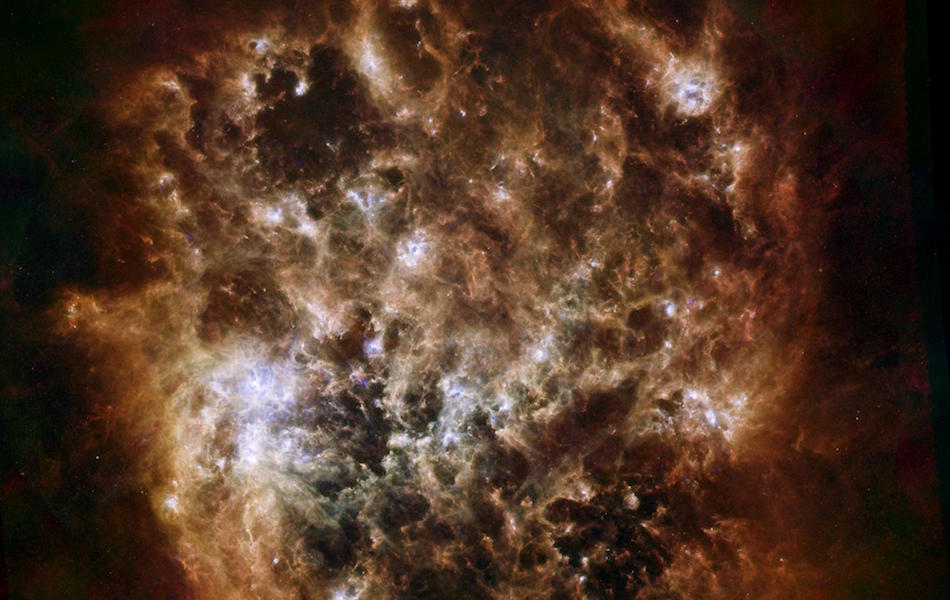Imagine an alien. If you’ve been influenced by movies and television at all, the creature you’re picturing is probably two-legged, two-armed, bipedal and with a reminiscently human layout – head, eyes and mouth somewhere near the top. And while most of us recognise that this vision of extra-terrestrial life is a bit silly, conversations about life elsewhere in the universe are often still painfully unimaginative – we always seem to end up talking about large, multicellular, intelligent organisms.
We desire nothing more than to find an intellectual counterpart on another planet (even though we sit idly by as highly intelligent creatures on our own planet are in decline). But the chances are if there is life out there, it’s probably nowhere near that complex, although it may well be quite sophisticated in it’s own way.
If I were a gambling woman, I would bet that any life out there in the universe is probably microbial. Here’s why.
To the best of our understanding, life on Earth arose when simple, spontaneously-formed molecules – probably made from a relative of DNA called RNA – developed the ability to replicate themselves using simple molecules in their environment. At this moment, the process of natural selection immediately came into force. Although our best estimate keeps getting pushed back, earlier and earlier, we are fairly certain that simple single-celled organisms were present on Earth around 4 billion years ago. Within just 500 million years of the cease-fire of meteor bombardment that made the planet uninhabitable, simple microbial life was flourishing. But it took another 2.5 billion years before the idea of multicellularity even came up.
Like modern bacteria, the first microbes probably produced energy using their outer membrane. This is a clever trick, but it seriously restricts their maximum size.
It was about 2 billion years before the size limit on life was lifted by one of the most remarkable and fascinating events in evolutionary history – the origin of microbes with compartmentalised cells, known as eukaryotes.
Scientists think that one amoeba tried to engulf another one but instead it’s dinner became trapped inside and turned into a hitchhiker, living and replicating within the larger amoeba. Over time, evolution adapted this symbiotic relationship, stripping away the unnecessary parts and turning the engulfed bacteria into what we now know as mitochondria – the membrane-bound organelles within our cells that produce energy.
Mitochondria may have been key to the evolution of multicellularity – by making use of this secondary membrane, cells were free to grow much larger without affecting their energy efficiency. This may have opened up a new range of possible niches and paving the way to multicellular life.
The creation of mitochondria seems to have been a fluke event that gave single-celled organisms the secondary internal membrane they needed to support increased size and, ultimately, complexity. After all, it took 5 times longer for this to happen than for life itself to evolve. The chances that these events would coincide again on another planet are astronomically small.
Perhaps most importantly, there is no reason to assume that evolution would favour the emergence of complexity on other planets. Life can get on quite happily and quite successfully for many hundreds and even thousands of of millennia without needing to become “complex”, in the way that we understand it. All it needs to do is successfully pass on its genetic material. Single-celled organisms are still arguably the most successful organisms on our planet, and will probably long outlive multicellular life on this planet, too.
So please, let’s stop worrying about finding intelligent life elsewhere in the Universe – let’s focus on finding some unintelligent life.
Want to know more?
- Nick Lane (2005) Power, sex, suicide Mitochondria and the meaning of life. Oxford University Press.: New York, New York, USA. 368p. ISBN: 0-192-80481-2
- Michael Lynch and Georgi Marinov (2017) Membranes, energetics and evolution across the prokaryote-eukaryote divide. eLife doi: 10.7554/eLife.20437
- Cell Energy and Cell Functions
Featured image by ESA/NASA/JPL-Caltech/STScI is in the public domain.





